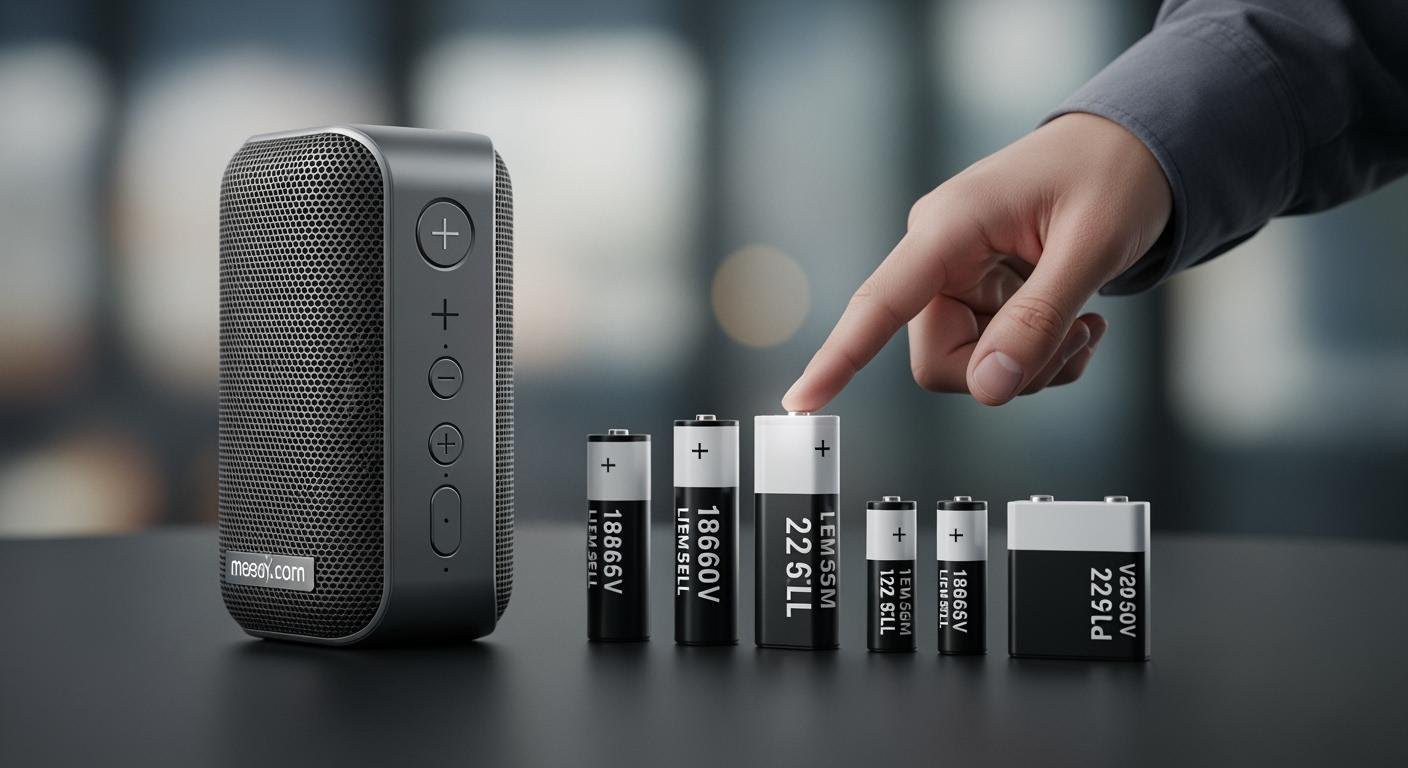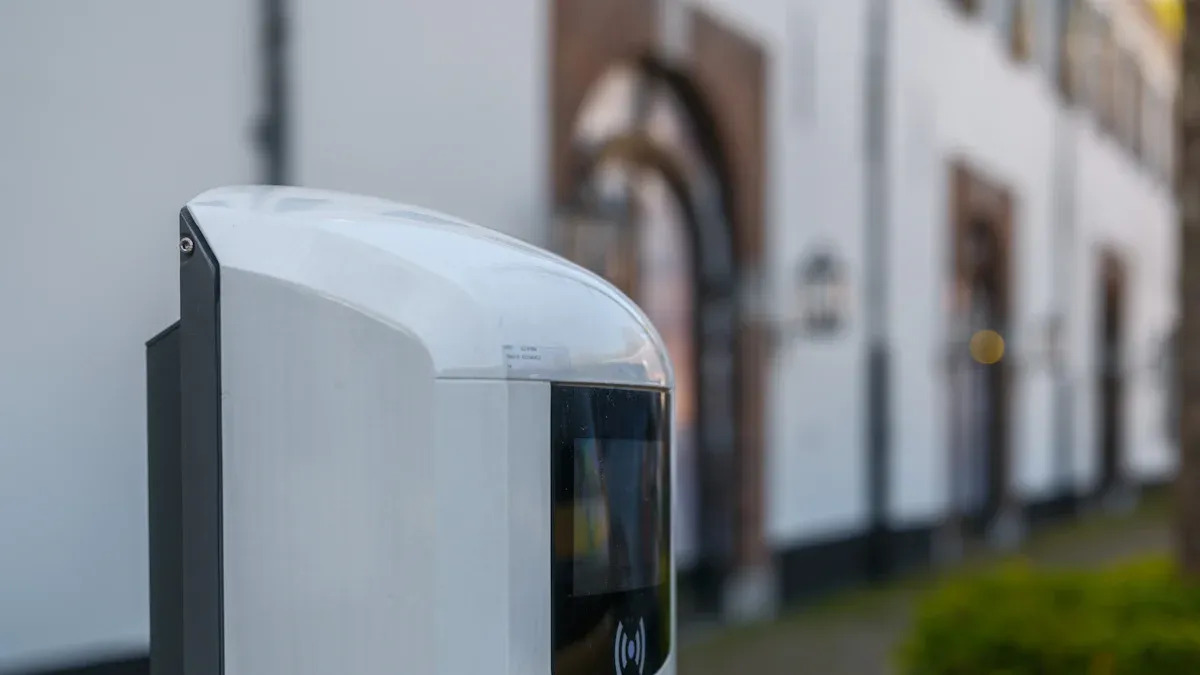
Your portable speaker probably dies too quickly. This limits your music on the go. Choosing the right battery is the key to restoring its performance. You can greatly improve its battery life. You just need to match your old speaker battery with new lithium batteries.
Focus on three key details: battery capacity (mAh), voltage (V), and physical fit. This guide makes finding a replacement speaker battery simple.
Key Specs for Your Speaker Battery
Choosing the right battery for your speaker requires you to become a detective. You need to find a replacement that matches your old battery’s specifications. Focusing on the correct details ensures safety, compatibility, and the performance you expect.
Why Modern Speakers Use Lithium Batteries
You may wonder why your speaker uses a specific type of battery. Modern electronics rely on rechargeable lithium-ion batteries for several key reasons. These advanced power cells offer the best combination of power and portability.
First, lithium-ion batteries have a very high energy density. This means they pack more power into a smaller, lighter package compared to older rechargeable technologies. Your speaker can be lightweight and compact while still delivering hours of music.
| 电池类型 | 能量密度(Wh/kg) | Key Feature |
|---|---|---|
| Lithium Ion (Li-ion) | 高 | Lightweight and powerful |
| 镍氢(NiMH) | 60-80+ | Higher than NiCd, but heavier |
| Nickel Cadmium (NiCd) | Relatively low | Older, heavier technology |
Second, these batteries are built for the long haul. A typical lithium ion battery can handle 300-500 个充电周期 before its capacity significantly drops. This gives you years of reliable use. Finally, lithium batteries hold their charge exceptionally well. They lose only about 1-2% of their charge per month when not in use, so your speaker is ready to go when you are.
Matching Capacity (mAh) for Playtime
You can think of battery capacity as the fuel tank for your speaker. It is measured in milliamp-hours (mAh). A higher mAh number means the battery can store more energy, which usually translates to a long playtime.
- Higher mAh: You can often choose a replacement with a slightly higher mAh rating. This is a great way to get a high capacity battery and extend your desired playtime. The new battery will not harm your speaker, but the charging process will take longer.
- Lower mAh: A battery with a lower mAh rating will also work. However, it will reduce your speaker’s runtime.
A lower mAh value is a conservative choice. The main result is simply “few hours less” of runtime. This ensures compatibility without risking damage.
Your goal is to find a balance that gives you the desired playtime. Matching the original mAh is the safest bet, but a small upgrade can boost performance.
Verifying Voltage (V) for Safety
Voltage (V) is the most critical specification for safety and compatibility. You must match the voltage of the new battery to the original speaker battery. Using a battery with the wrong voltage can permanently damage your speaker’s internal circuits.
Most portable speakers use a single-cell lithium ion battery or lithium polymer battery, which has a nominal voltage of 3.7V. Always check the label on your old battery to confirm this number.
Safety First: The Protection Circuit A quality replacement battery must include a built-in Protection Circuit Module (PCM). This tiny electronic board is essential for safety. It protects the lithium-ion batteries from common dangers like overcharging, over-discharging, and short-circuiting. Never use a battery that does not have a protection circuit.
Confirming Size and Connector Type
A battery’s specifications are useless if it does not physically fit inside your speaker. Before ordering a replacement, you must confirm its physical dimensions and connector type.
- Measure the Dimensions: Use a ruler or calipers to carefully measure your old battery’s length, width, and height in millimeters (mm). A common format you will see online is
Height x Width x Length. For example, a battery might be listed as5mm x 34mm x 50mm. Size is key for proper compatibility. - Check the Connector: Look at the plastic plug at the end of the battery’s wires. Count the number of pins and note the plug’s shape and size. The new battery must have an identical connector to plug into your speaker’s main board.
Taking the time to check these physical details is a crucial step in choosing the right battery and guaranteeing a successful installation.
Sourcing a Battery for Wireless Speakers

Once you know your battery’s specs, your next mission is to find a reliable source. You have several options for finding the right battery for wireless speakers. Each path offers different levels of cost, convenience, and compatibility.
Checking the Manufacturer’s Website
Your first stop should be the speaker manufacturer’s official website. This is the safest way to guarantee perfect compatibility. Some companies, like ION Audio, sell official replacement batteries directly to consumers. An original equipment manufacturer (OEM) speaker battery often includes a strong warranty. This may feature a 12-month free replacement period followed by pro-rated coverage for up to 60 months. While this option might be more expensive, it provides peace of mind.
Searching Reputable Online Retailers
Online marketplaces like Amazon, eBay, and specialized stores like Pro Audio Center offer a vast selection. You can find batteries for brands such as JVC, KICKER, and Focal. However, you must be cautious. Counterfeit batteries can be dangerous and perform poorly.
Buyer Beware: Always check supplier reviews and ratings before you purchase. Look for feedback on product longevity, customer support responsiveness, and warranty claims. This helps you avoid sellers with a history of fake reviews or false claims.
To verify a quality speaker battery, check for these signs:
- Safety Certifications: Look for official symbols like
CE,UL和联邦电信交通委员会on the battery itself. - Quality Packaging: Genuine batteries arrive in anti-static bags and professional packaging.
- Solid Build: The battery should feel solid, with no bulging or uneven seams.
Consulting Specialized Battery Shops
For a high-performance or hard-to-find battery, a specialized battery shop is an excellent resource. These experts can often build a custom battery pack for you. A custom solution ensures perfect physical and electrical compatibility. The initial cost is higher—a custom pack might cost $500, while a standard one is closer to $200. However, you get superior performance, higher charging efficiency, and a much longer lifespan. This investment can be worthwhile for high-end speakers or if you want to maximize runtime.
Installation and Battery Care

You have the right speaker battery. Now you can focus on installation and long-term care. Following safe procedures and good habits will protect your speaker and maximize its new battery life.
A Safe Battery Replacement Guide
Safety is your top priority when you handle any rechargeable lithium-ion batteries. Before you begin, you should prepare your workspace and yourself.
- Gather Your Tools: You will need a few items. These include a screwdriver set, plastic spudgers or wedges to open the speaker case, and a multimeter to check voltage.
- Protect Yourself: Always wear safety glasses and insulated gloves. Work in a well-ventilated area to avoid any fumes from the old lithium ion battery.
- Power Down Completely: Turn off your speaker. Disconnect it from any power source. You can use a voltage tester to confirm the old rechargeable battery has no remaining charge.
After you install the new rechargeable speaker battery, you must dispose of the old one correctly. Never throw lithium-ion batteries in the trash.
You can find a local recycling center for your old lithium ion battery. Organizations like Call2Recycle offer locator tools on their websites. Retailers like Best Buy, Home Depot, and Staples also accept old rechargeable lithium batteries for recycling.
Tips to Maximize Lifespan
Proper care extends the life of your new lithium ion battery. Simple charging habits make a big difference. You can keep your rechargeable battery healthy for years.
Avoid letting your lithium-ion batteries drain completely to 0%. A good practice is to start charging the battery when it drops to around 20%. To maximize battery life, you should keep the charge level between 20% 和 80%. This range reduces stress on the battery’s internal components.
Temperature also plays a huge role. Extreme heat or cold can damage lithium batteries and reduce their capacity. The best performance for a rechargeable battery occurs between 20°C and 30°C (68°F to 86°F). Avoid charging your device in direct sunlight or freezing conditions.

Finally, be mindful of fast charging. While convenient, frequent fast charging generates extra heat. This can shorten the lifespan of lithium-ion batteries. Use standard, slower charging when you have time.
You now have the knowledge to revive your device. You can find the right speaker battery by matching its voltage, battery capacity, and size. Remember to purchase from a trusted supplier and follow good charging habits. With these steps, you are ready to successfully replace the battery. Get ready to enjoy your favorite music on the go with a fully restored speaker! 🎶
常见问题
Can I use a battery with a higher mAh?
Yes, you can choose a battery with a higher milliamp-hour (mAh) rating. This gives your speaker a longer playtime between charges. The new battery will simply take a bit longer to charge fully. It will not harm your speaker’s electronics.
How do I know my battery needs replacing?
You will notice clear signs of a failing battery. Your speaker may not hold a charge for very long. It might also shut down unexpectedly. In some cases, the speaker will only power on when it is plugged into the charger.
Is it safe to replace the battery myself?
You can perform the replacement safely with proper care. If you feel uncomfortable handling electronics, you should seek professional help.
Safety Tip: Always work in a well-ventilated area. Never use sharp metal tools to pry out the old battery, as this could puncture it.
What if I cannot find an exact battery match?
You can find a solution if an exact match is unavailable. Specialized battery shops can often build a custom battery pack for you. This ensures the new battery has the correct voltage, size, and connector to fit your speaker perfectly.

